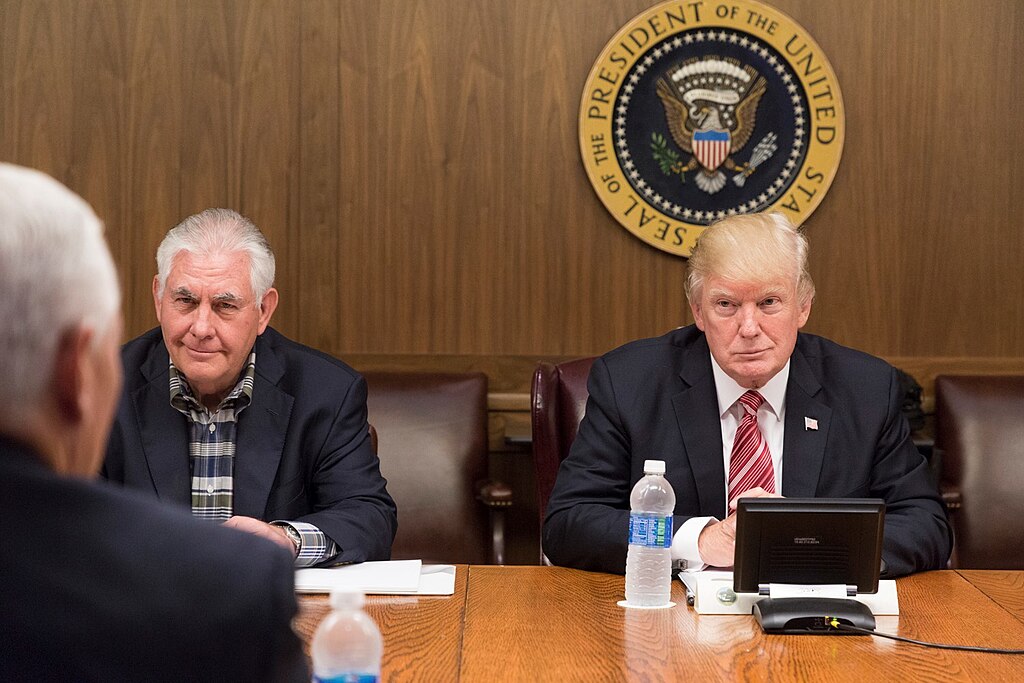The Republican Party’s decisive victory in the 2024 elections has reignited comparisons to its 2016 “sweep” that handed the GOP control of both the White House and Congress. However, while the broad goals of the Republican agenda remain similar, key differences in Congressional dynamics and policy approaches reveal the unique challenges of governing in 2025.
In both election cycles, Republicans secured majorities in the House and Senate, along with the presidency. Yet, the numbers tell a slightly different story this time around. The Senate majority has expanded to a 53-47 split, compared to the 52-48 margin in 2017, giving Republicans slightly more room to maneuver on legislative and confirmation votes. Meanwhile, the House majority has significantly narrowed, leaving the GOP with a single-digit lead—a far cry from the 23-seat cushion enjoyed during Trump’s first term.
A More United but Fragile GOP
One significant distinction is the level of Congressional support President-elect Trump is expected to receive. Unlike in 2016, his second term begins with a GOP caucus more closely aligned with his agenda. Analysts highlight the influx of Trump allies in the House as a potential boost to party unity on critical votes, even with the slim majority.
However, intra-party friction could still emerge. Some returning Republican lawmakers previously voted to impeach Trump, indicating that divisions within the GOP could complicate efforts to pass controversial policies. The tight House margin also raises the stakes for every vote, making bipartisan support or concessions to moderate Republicans critical for legislative success.
Tax Cuts and the IRA Repeal Loom Large
Tax reform remains a cornerstone of the Republican policy agenda, echoing the goals of Trump’s first term. This time, however, the focus has shifted toward using a repeal of the Inflation Reduction Act (IRA) to fund new tax cuts. While the GOP views this as a way to advance its fiscal priorities, the move is fraught with risks. Many Republican lawmakers represent districts that benefit from IRA-funded projects, potentially forcing leadership to negotiate compromises on contentious items like state and local tax (SALT) deductions.
“These dynamics make the road to tax reform far more complicated than in 2017,” analysts at Raymond James observed in a recent report.
Challenges in Appointments and Policy Execution
Trump’s second term also faces hurdles in staffing critical administration roles. While early appointments suggest a continuation of his immigration and energy policies, Senate confirmation battles loom large. Trump’s team has reportedly considered recess appointments to bypass Senate delays, but legal limits on this tactic could hinder its effectiveness.
Additionally, the tighter House majority may restrict efforts to reverse key Democratic policies, such as the IRA, and could force Republicans to scale back their legislative ambitions.
A New Era of GOP Governance
Despite these challenges, analysts see opportunities for the Republican Party to enact significant policy changes. While echoes of 2016 remain in the pursuit of tax reform, deregulation, and conservative judicial appointments, the narrow majorities in Congress require a more strategic approach.
As President-elect Trump prepares for his second inauguration, the GOP’s focus will be balancing its sweeping policy ambitions with the realities of a closely divided legislature.



 Taiwan Opposition Criticizes Plan to Block Chinese App Rednote Over Security Concerns
Taiwan Opposition Criticizes Plan to Block Chinese App Rednote Over Security Concerns  Asian Markets Mixed as RBI Cuts Rates and BOJ Signals Possible Hike
Asian Markets Mixed as RBI Cuts Rates and BOJ Signals Possible Hike  China’s Expanding Maritime Military Presence Alarms Taiwan and Japan
China’s Expanding Maritime Military Presence Alarms Taiwan and Japan  Trump Administration Tightens H-1B Visa Vetting With New Focus on Free Speech and Censorship
Trump Administration Tightens H-1B Visa Vetting With New Focus on Free Speech and Censorship  BOJ Faces Pressure for Clarity, but Neutral Rate Estimates Likely to Stay Vague
BOJ Faces Pressure for Clarity, but Neutral Rate Estimates Likely to Stay Vague  Proxy Advisors Urge Vote Against ANZ’s Executive Pay Report Amid Scandal Fallout
Proxy Advisors Urge Vote Against ANZ’s Executive Pay Report Amid Scandal Fallout  Trump Claims He Will Void Biden Documents Signed with Autopen
Trump Claims He Will Void Biden Documents Signed with Autopen  Sam Altman Reportedly Explored Funding for Rocket Venture in Potential Challenge to SpaceX
Sam Altman Reportedly Explored Funding for Rocket Venture in Potential Challenge to SpaceX  Spain’s Industrial Output Records Steady Growth in October Amid Revised September Figures
Spain’s Industrial Output Records Steady Growth in October Amid Revised September Figures  Australia Moves Forward With Teen Social Media Ban as Platforms Begin Lockouts
Australia Moves Forward With Teen Social Media Ban as Platforms Begin Lockouts  Tesla Faces 19% Drop in UK Registrations as Competition Intensifies
Tesla Faces 19% Drop in UK Registrations as Competition Intensifies  China Urged to Prioritize Economy Over Territorial Ambitions, Says Taiwan’s President Lai
China Urged to Prioritize Economy Over Territorial Ambitions, Says Taiwan’s President Lai  Pentagon Probe Finds Hegseth’s Use of Signal Risked Exposing Sensitive Yemen Strike Details
Pentagon Probe Finds Hegseth’s Use of Signal Risked Exposing Sensitive Yemen Strike Details  Australia Progresses AUKUS Review as U.S. Affirms Strong Support
Australia Progresses AUKUS Review as U.S. Affirms Strong Support  Trump’s Name Appears on U.S. Institute of Peace Ahead of Rwanda–Congo Deal Signing
Trump’s Name Appears on U.S. Institute of Peace Ahead of Rwanda–Congo Deal Signing  Asian Currencies Steady as Rupee Hits Record Low Amid Fed Rate Cut Bets
Asian Currencies Steady as Rupee Hits Record Low Amid Fed Rate Cut Bets  Israel Receives Body of Deceased Hostage as Rafah Crossing Reopening Hinges on Final Returns
Israel Receives Body of Deceased Hostage as Rafah Crossing Reopening Hinges on Final Returns 






























